iPhone XS vs Samsung Galaxy S9
They’re surprisingly similar
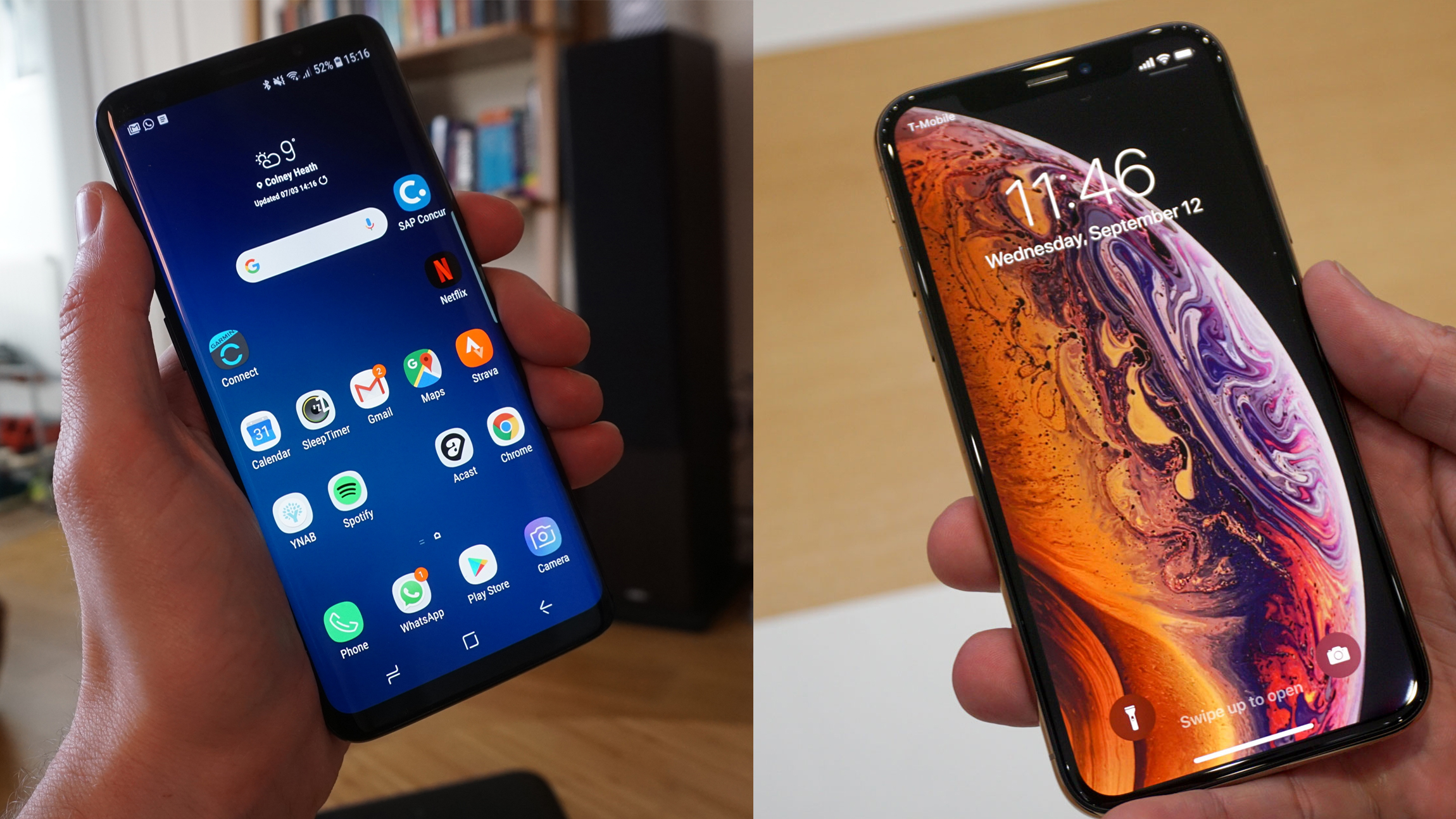
With the iPhone XS freshly announced, Apple’s new flagship naturally stands ready for comparison to a whole host of other smartphones. The most logical competitor is Apple’s fiercest rival: Samsung. So, let’s take a look at how the new iPhone XS stacks up against the Samsung Galaxy S9.
One thing that we’ve already noticed is how many ways the two devices are similar. From their sizes and some aspects of their design, they’ve got a good bit of overlap. Except this time, since Samsung led the charge for bezel-reduced designs, Apple’s not likely to take Samsung to court for the similarities.
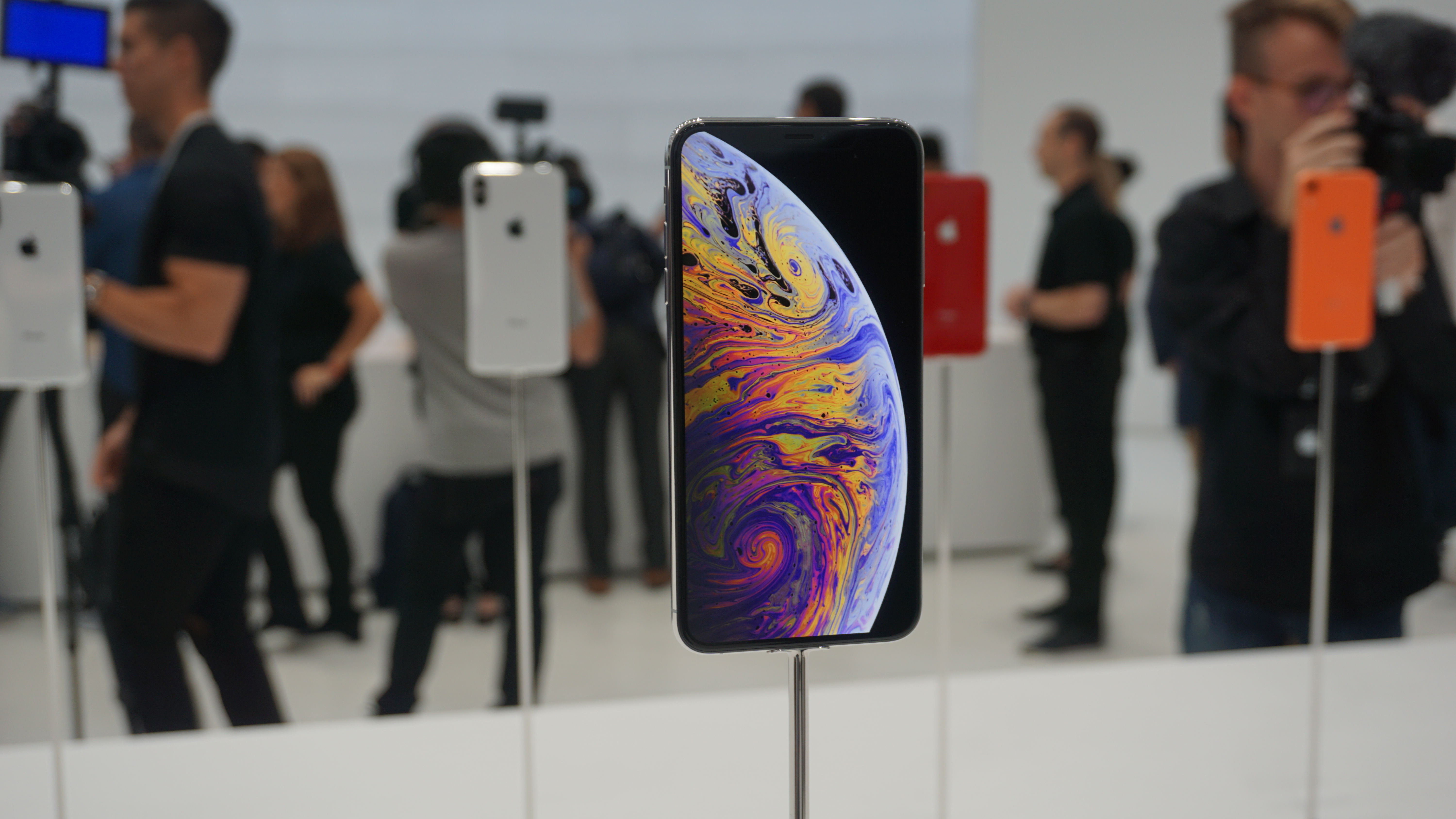

Design
Neither the Galaxy S9 nor the iPhone XS have the most original designs. Both of them are mostly upgrades on last year’s flagship models with little change to the look. The Galaxy S9 has little visibly changed from the Galaxy S8, and the iPhone XS looks a lot like the iPhone X.
In size, the two phones are closely matched. The Galaxy S9 measures 147.7 x 68.7 x 8.5mm next to the iPhone XS’s slightly shorter, shallower, but wider 143.6 x 70.9 x 7.7mm. The iPhone XS is built with a glass front and back and a stainless steel frame, while the Galaxy S9 uses an aluminum frame, but is otherwise all glass as well.
The aluminum in the Galaxy S9 may have helped it trim a few grams. It’s weighs 163g, just a hair less than the 177g iPhone XS.
Both have a premium feel with that mix of metal and glass, and both have tried to ensure their phones don’t break too easily. You’ll find a dust and water-resistance rating of IP68 on both, though Apple notes the iPhone XS is rated for 30 minutes at depth of 2 meters underwater compared to Samsung’s 1.5-meter depth.
Samsung has used Gorilla Glass 5 to keep the Galaxy S9 from turning into a shattered mess after a shallow fall, though we’d still suggest a Galaxy S9 case. Apple has a custom design that it says is “the most durable glass ever in a smartphone,” but we’ll just have to wait and see how that translates to a flat drop onto concrete.
Get daily insight, inspiration and deals in your inbox
Sign up for breaking news, reviews, opinion, top tech deals, and more.
The Galaxy S9 has a USB-C port, a 3.5mm headphone jack, and a microSD card slot - three things the iPhone XS doesn’t have. To get more storage on the iPhone XS, you have to buy it up front. Headphones can connect to the iPhone XS wirelessly, or through the Lightning Connector at the bottom of the phone. Both phones have stereo speakers, with Samsung noting that the Galaxy S9’s speakers are tuned by AKG and support Dolby Atmos.
Apple’s iPhone XS has a notch at the top of the display where it houses the front-facing camera and sensors for Face ID unlocking. The Galaxy S9 doesn’t have a notch, but does have bezel at the top and bottom of the display, with the front-facing camera and sensors for iris scanning and facial recognition above the display. Samsung also has a fingerprint scanner on the rear of the phone, while Apple has ditched the scanner.
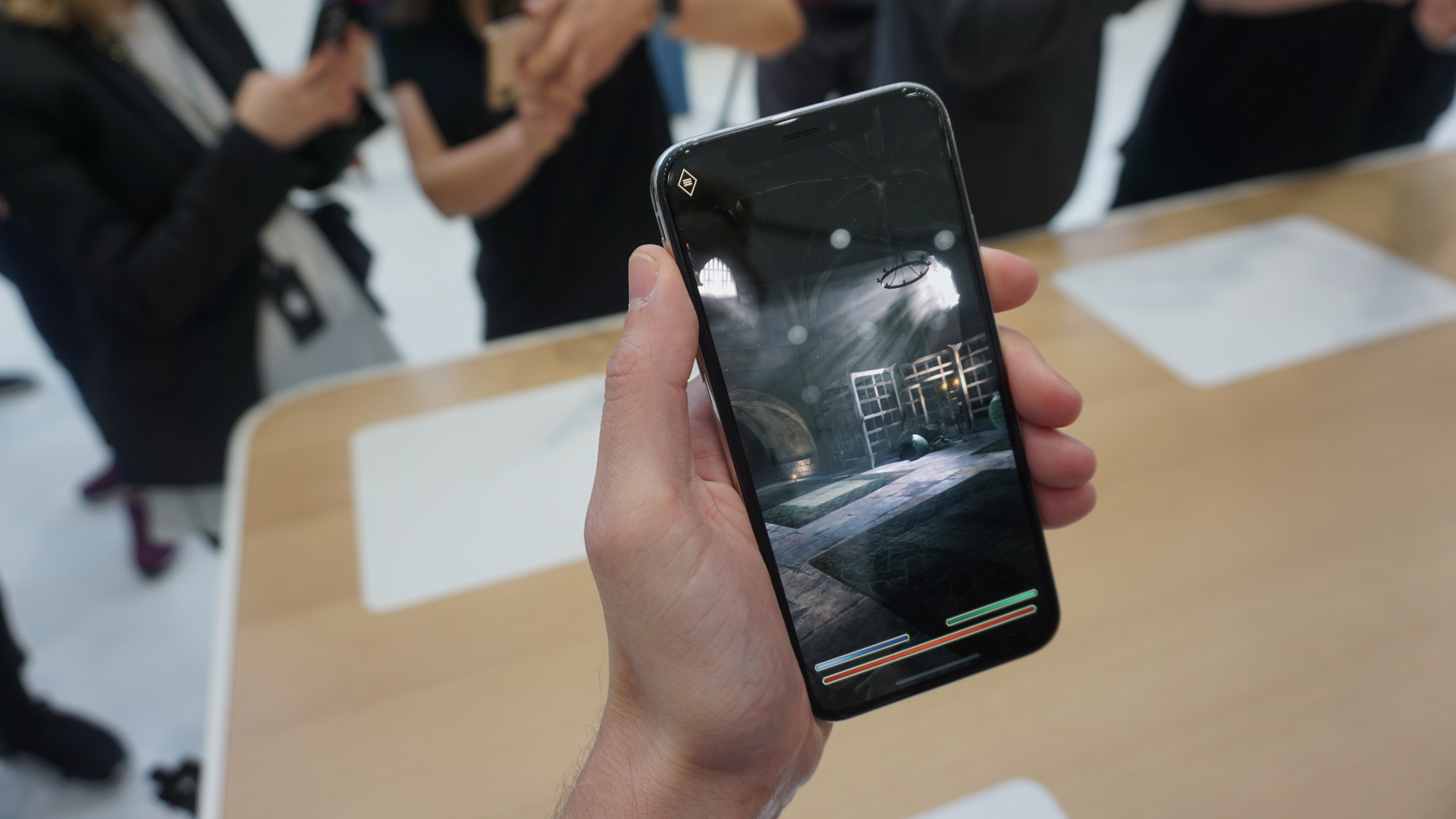
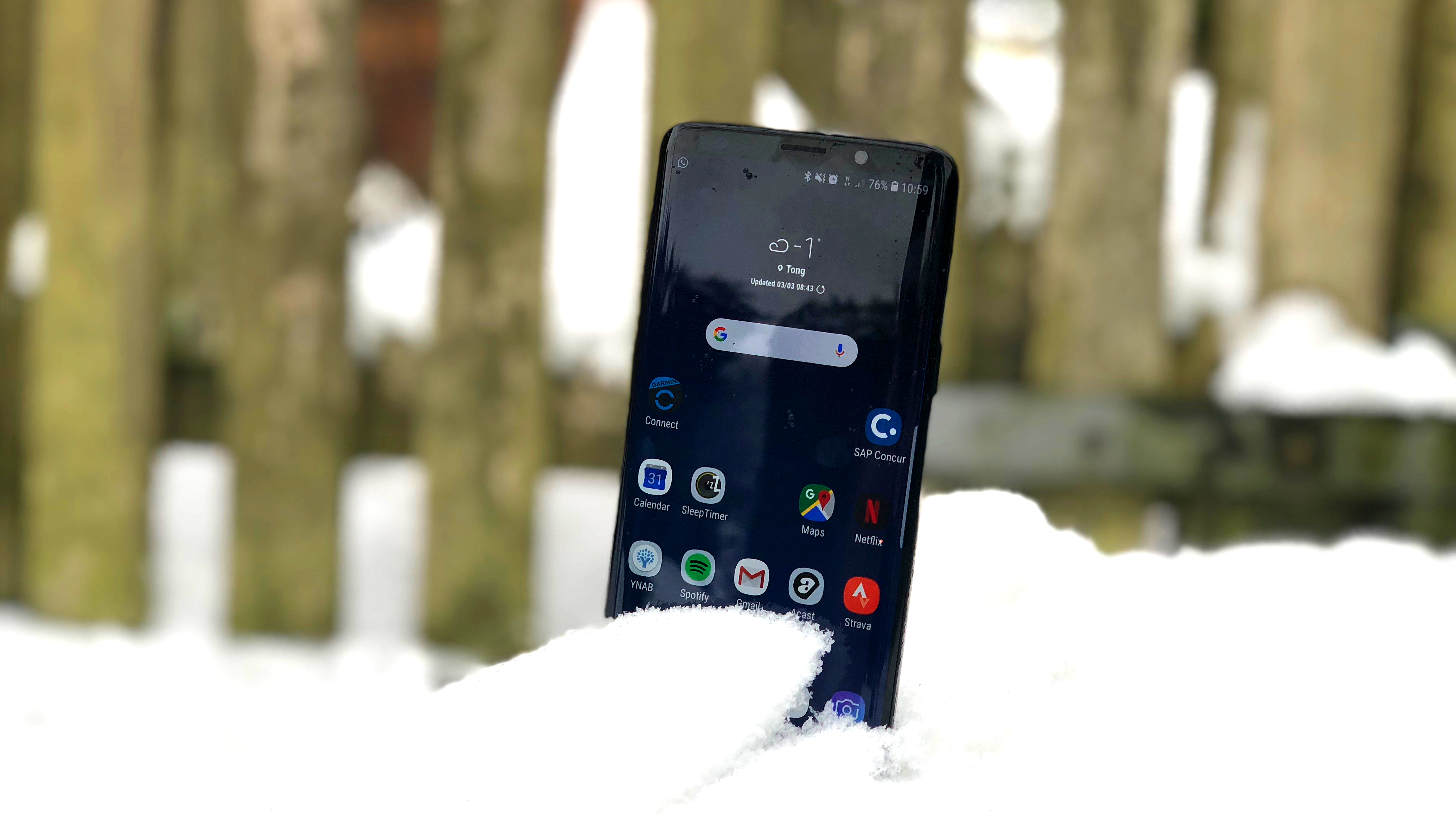
Display
The Galaxy S9 and iPhone XS displays aren’t all that different. Both are 5.8-inch OLED panels, though Samsung’s is Super AMOLED. The Galaxy S9 display is also a sharp 2,960 x 1,440 resolution, which gives it an incredibly dense 570ppi. In contrast, Apple’s iPhone XS display is 2,436 x 1,125 for 458ppi.
While Samsung gets the edge in the pixel department, Apple boasts broader HDR support with a 60% increase in dynamic range. The Galaxy S9 is certified for Mobile HDR Premium content, but it doesn’t support Dolby Vision. The iPhone XS does support Dolby Vision as well as HDR10, the later being an upgrade over the Dolby Vision-supported iPhone X.
On paper, there are clear differences between the two displays. But, in the real world, you’re not likely to notice that much difference underneath the glass. Both are going to look plenty crisp, with great contrast ratios. The most noticeable thing is going to be Apple’s screen notch and Samsung’s elegantly curved display along the sides.
3D Touch and a 120Hz touch-sensing screen are differentiators the iPhone XS has, but those aren’t major selling features. The Galaxy S9 will still feel plenty smooth swiping around, and it 3D Touch-like control even if it doesn’t use actual pressure-sensing tech.


OS and power
Here’s where the iPhone XS and Galaxy S9 really separate themselves. The iPhone XS is running iOS 12 on Apple’s proprietary A12 Bionic chipset, which introduces the Neural Engine for some advanced photography, video, and image processing. The Galaxy S9 runs Android 8.0 Oreo out of the box, though should see an update to Android 9.0 Pie early next year (probably around the same time the Samsung Galaxy S10 launches).
The Galaxy S9 runs on a Snapdragon 845 chipset, which is great, but Apple has been showing the superior power of its custom chipsets, and we expect the A12 Bionic will be smashing just about all the smartphone chipset competition it gets benchmarked against. The Neural Engine is likely going to give it the edge in AR applications as well. That said, both phones are going to feel incredibly fast, and OS preference will play a big role in deciding a which phone is more worth your money.
Neither phone is rocking a major battery either. Samsung’s Galaxy S9 has a pretty typical 3,000mAh battery. Apple doesn’t state the size of the battery in the iPhone XS, but we believe it’ll be somewhere slightly below the 3,000mAh mark. The iPhone X had about a 2,700mAh , and Apple says the XS will last 30 minutes longer than last year’s X. With big, bright displays, both phones should be handling about a day of use, but two days is out of the question for serious users.
Both phones support wireless and fast charging, but the iPhone XS doesn’t come bundled with the charger needed for fast charging, while the Galaxy S9 does. And, Samsung often offers bundles that can include one of its wireless charging docks.
On the storage front, both phones start with a base storage of 64GB. But, the iPhone XS can go all the way up to (an absurd) 512GB of built-in storage. That much storage will cost you, but we’ll get into that later. The Galaxy S9 can go up to 256GB with built-in storage, but you can upgrade it even further than the iPhone XS via the previously mentioned microSD slot. ‘
The iPhone XS offers Apple’s Siri virtual assistant, while the Galaxy S9 comes with Samsung’s Bixby and the option of Google Assistant. This is another matter of preference, but while we have found Apple’s Siri to be falling behind next to Google and Alexa, Bixby is consistently the poorest performer in our tests.
One advantage Samsung does gain in this category comes from the ability to use the Galaxy S9 as a portable computer. By plugging it into a Dex Pad, you can connect to a keyboard, mouse, and external monitor to run the Galaxy S9 like an Android-based computer. So, for an all-in-one solution, Samsung pulls ahead.
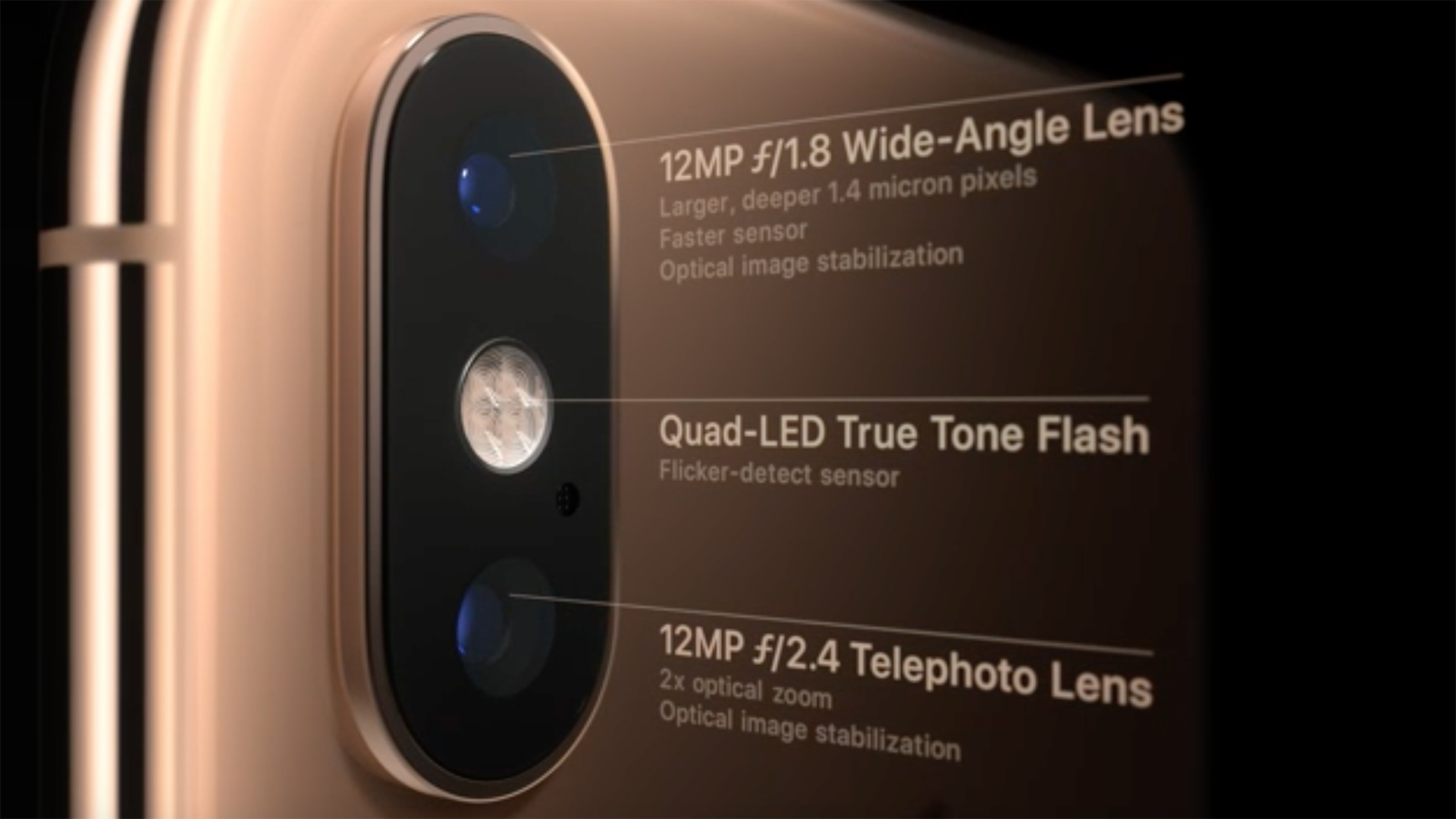
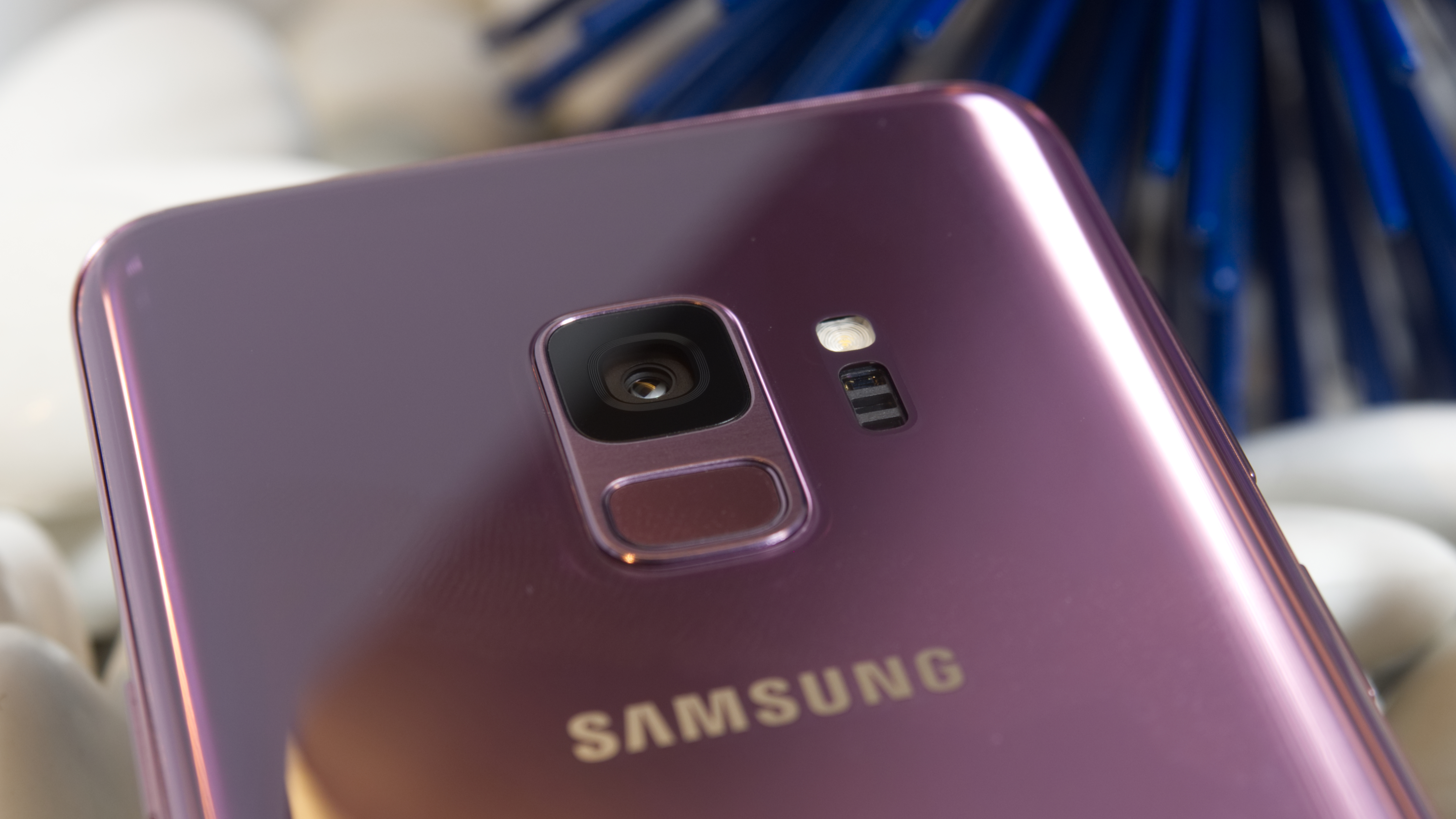
Camera
We’re going to have to wait until we’ve had ample testing time with the iPhone XS cameras to call this faceoff. But, there’s little doubt you’ll be looking at phenomenal photos from either phone’s cameras.
The new iPhone XS has a dual-sensor system on the rear with a 12MP, f/1.8 wide-angle camera and a 12MP, f/2.4 telephoto camera. The latter gives the iPhone XS 2x optical zoom. There’s optical image stabilization in both cameras, and Apple has a Quad-LED True Tone flash paired with the sensors. On the video front, they can capture 4K video at up to 60fps and 1080p slo-mo at up to 240fps.
The Galaxy S9 only has one image sensor on the rear, but it’s 12MP with optical image stabilization. Samsung has given it a neat trick, too, with the ability to change aperture between a fast f/1.5 and f/2.4. Since the Galaxy S9 rear camera has 1.4-micron pixels, and the iPhone XS wide-angle camera does as well, the wider aperture offered by the Galaxy S9 should at least give it stronger low-light performance. But a lot of this comes down to software and your personal preference on how photos turn out. When it comes to video, these phone offer the same 4K video recording resolution. Neither has a clear advantage before we dive into camera tests.
The front-facing cameras are a little different. Samsung has an 8MP sensor on the front of the Galaxy S9 with a wide f/1.7 aperture. It should perform better in low-light than the iPhone XS’s 7MP, f/2.2 front-facing camera. Between Samsung’s AR Emoji and Apple’s Animoji and Memoji, their offerings are fairly similar, though.
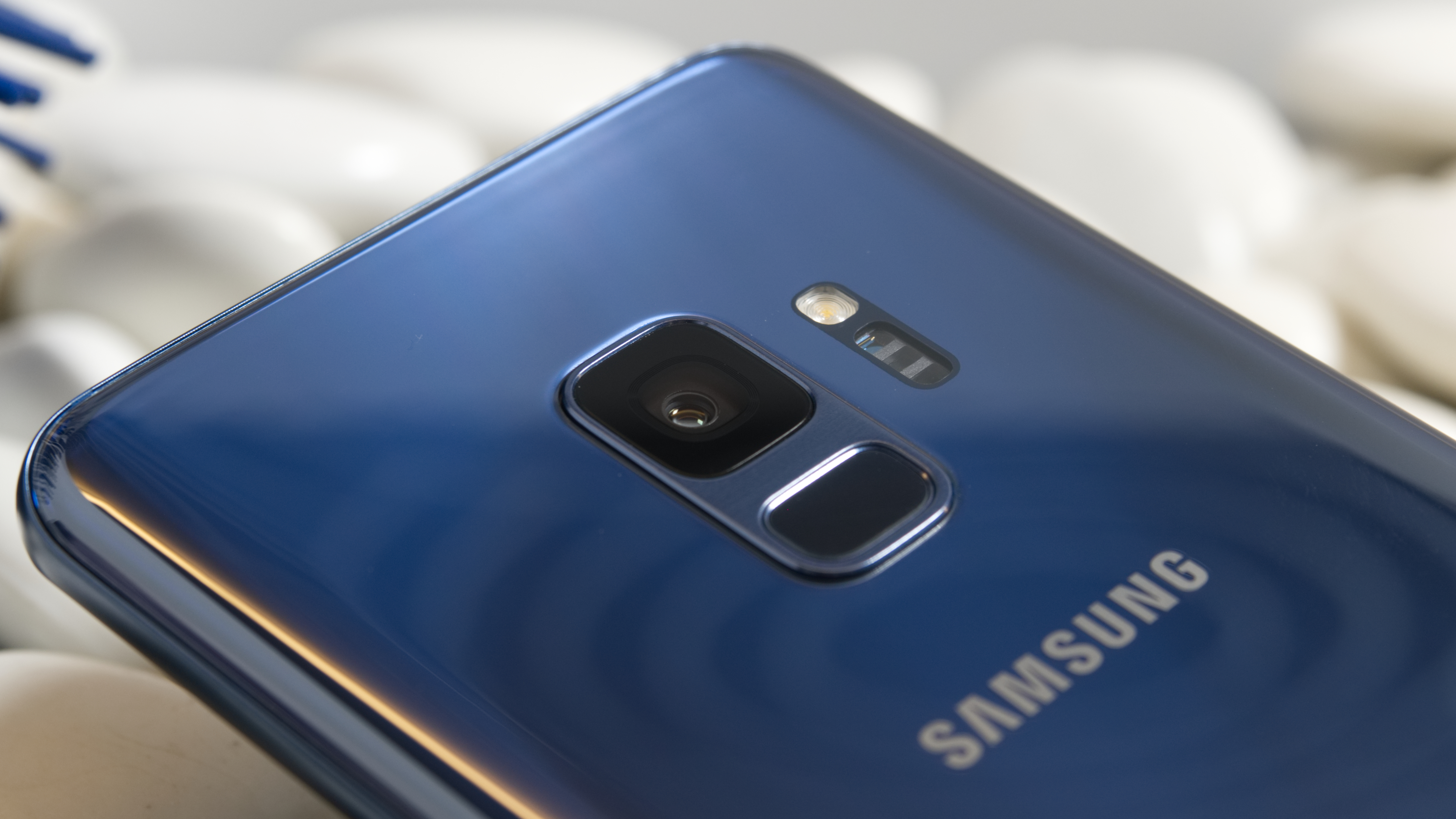
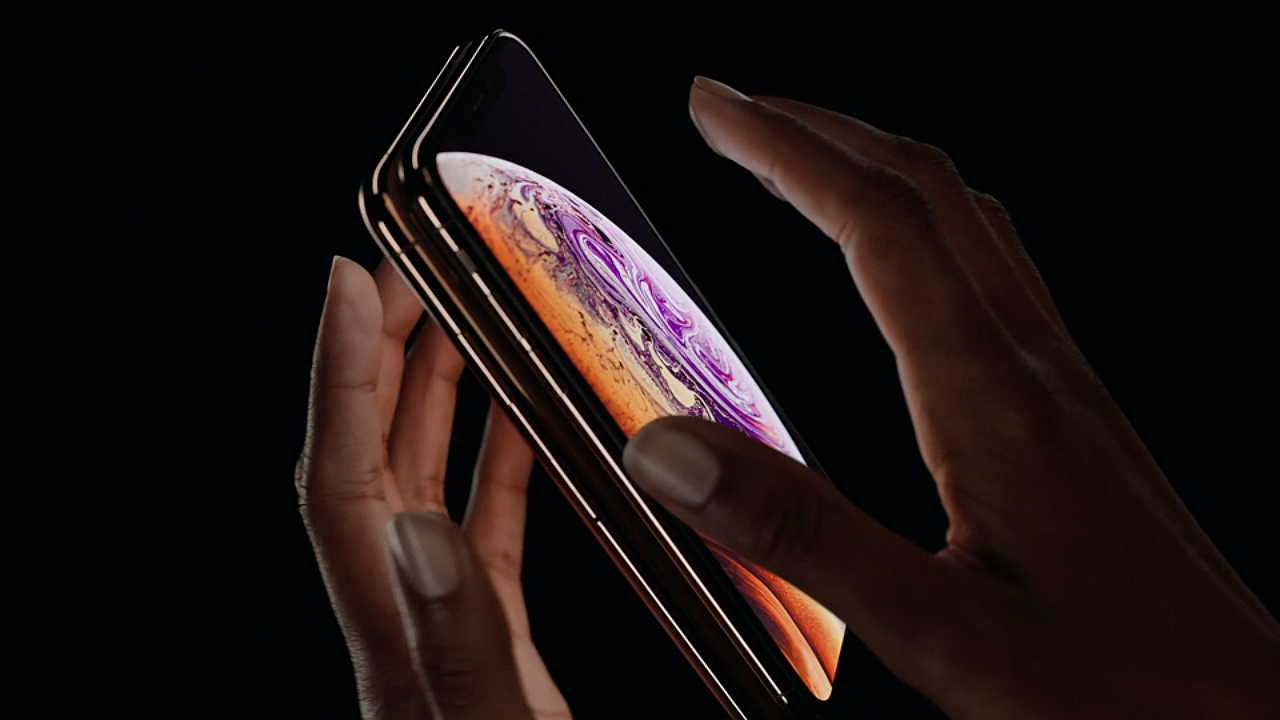
Price
Samsung takes a staggering lead in the price competition. The Galaxy S9 starts at just $719 (£739 / AU$1,199) for the 64GB model. And, since it isn’t brand new, Samsung Galaxy S9 deals aren’t hard to find, especially if you’re into freebies by way of bundles.
The iPhone XS, on the other hand, starts at the headache-inducing $999 (£999 / AU$1,629), the same price as last year’s iPhone X. And, that’s also for the 64GB model. For Apple’s 512GB iPhone XS, the price leaps up to $1,349 (£1,349 / AU$2,199).
With the Galaxy S9 costing about a quarter less than the iPhone XS, this part of the contest quickly goes to Samsung.
Takeaway
With the Galaxy S9 and iPhone XS, you’ve got two incredibly capable and dazzlingly designed phones. Since they are both more of internal upgrades than overhauls of last year’s flagships though, you won’t be getting the freshest new looks.
Both give you large, bright, and color-rich OLED screens that will impress your eyes equally, even if the on-paper specs are in Samsung’s favor. Similarly, Apple would appear to have the edge in the camera department, but only proper testing will show whether Apple’s dual-lens rear camera is better than Samsung’s single lens. And, when it comes to how powerful they are, Apple is probably going to show advantage in benchmarks, even if typical users will experience super smooth, snappy performance from both.
For anyone who hasn’t picked sides on the Android vs iOS battle, there’s one serious factor that’ll likely decide this face-off, and it’s price. With both phones offering so much and plenty similar between them, the huge price difference that lands heavily in Samsung’s favor makes the Galaxy S9 a better value than the iPhone XS.
Over the last several years, Mark has been tasked as a writer, an editor, and a manager, interacting with published content from all angles. He is intimately familiar with the editorial process from the inception of an article idea, through the iterative process, past publishing, and down the road into performance analysis.
